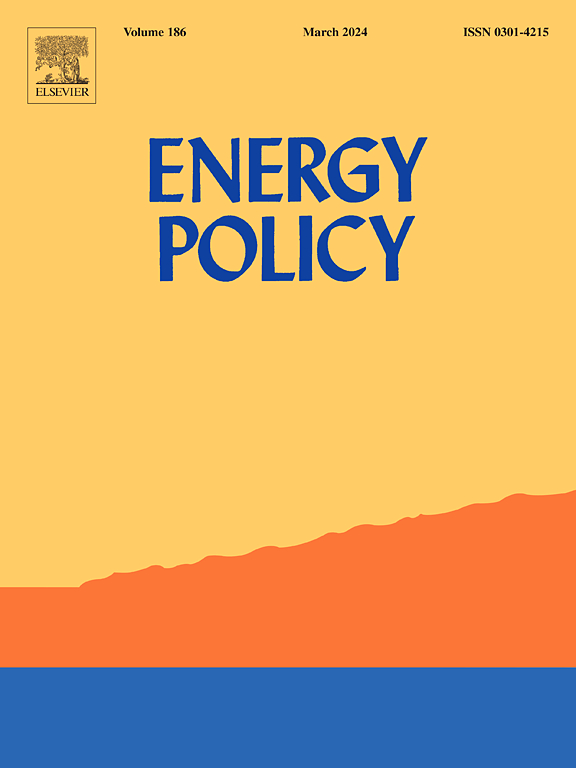评估沙特阿拉伯可持续能源转型的因素和弹性策略:综合swot - tow分析和决策框架
IF 9.2
2区 经济学
Q1 ECONOMICS
引用次数: 0
摘要
向可再生能源过渡是沙特阿拉伯2030年愿景议程和可持续发展目标的关键优先事项。本研究应用SWOT分析来确定与可再生能源采用相关的优势、劣势、机会和威胁。然后,通过将内部因素与外部挑战和机遇结合起来,利用TOWS矩阵制定弹性战略,以增强能源安全和可持续性。为此,本文采用模糊层次分析法(FAHP)对沙特阿拉伯推动和阻碍可持续能源转型的SWOT因素和子因素进行评价。而模糊VIseKriterijumska Optimizacija I Kompromisno Resenje (FVIKOR)方法则用于优先考虑可持续能源转型的重要TOWS弹性策略。FAHP的研究结果表明,优势(S)是SWOT类别中最关键的因素,其次是威胁(T),机会(O)和弱点(W)。利用FAHP对每个主要类别的SWOT子因素的分析结果进一步表明,主要优势包括丰富的可再生能源资源和先进的能源基础设施,而劣势如监管挑战和社会阻力阻碍了进步。机遇来自国际合作和与2030年愿景的一致,而威胁包括政策不一致、地缘政治风险和技术风险。通过TOWS弹性策略的FVIKOR结果表明,发展可再生能源基础设施(SO1)是最关键的策略,其次是利用太阳能和风能资源(SO2),以及增加可再生能源技术的本地制造(WO1)。研究结果为决策者、政府和利益相关者制定能源解决方案以促进沙特阿拉伯的可持续发展提供了路线图。本文章由计算机程序翻译,如有差异,请以英文原文为准。
Assessing factors and resilience strategies for sustainable energy transition in Saudi Arabia: An integrated SWOT-TOWS analysis and decision-making framework
The transition to renewable energy is a key priority for Saudi Arabia under its Vision 2030 agenda and sustainable development goals. This study applies a SWOT analysis to identify the strengths, weaknesses, opportunities, and threats related to renewable energy adoption. Later, a TOWS matrix is used to formulate resilience strategies by aligning internal factors with external challenges and opportunities to enhance energy security and sustainability. In this regard, the Fuzzy Analytical Hierarchy Process (FAHP) method is employed to evaluate the SWOT factors and sub-factors that drive and hinder the adoption of sustainable energy transition in Saudi Arabia. While the Fuzzy VIseKriterijumska Optimizacija I Kompromisno Resenje (FVIKOR) method is used to prioritize the significant TOWS resilience strategies for sustainable energy transition. The findings of FAHP indicate that strengths (S) is the most critical factor from SWOT category, followed by threats (T), opportunities (O), and weaknesses (W). The findings of SWOT sub-factors from each main category using FAHP further show that key strengths include abundant renewable energy resources and advancing energy infrastructure, while weaknesses such as regulatory challenges and social resistance hinder progress. Opportunities arise from international collaborations and alignment with Vision 2030 whereas threats include policy inconsistencies, geopolitical risks, and technological risks. The FVIKOR results through TOWS resilience strategies indicated that developing renewable energy infrastructure (SO1) is the most crucial strategy, followed by utilizing solar and wind resources (SO2), and increasing local manufacturing of renewable technologies (WO1). The findings serve as a roadmap for policymakers, governments, and stakeholders aiming to develop energy solutions for sustainable development in Saudi Arabia.
求助全文
通过发布文献求助,成功后即可免费获取论文全文。
去求助
来源期刊

Energy Policy
管理科学-环境科学
CiteScore
17.30
自引率
5.60%
发文量
540
审稿时长
7.9 months
期刊介绍:
Energy policy is the manner in which a given entity (often governmental) has decided to address issues of energy development including energy conversion, distribution and use as well as reduction of greenhouse gas emissions in order to contribute to climate change mitigation. The attributes of energy policy may include legislation, international treaties, incentives to investment, guidelines for energy conservation, taxation and other public policy techniques.
Energy policy is closely related to climate change policy because totalled worldwide the energy sector emits more greenhouse gas than other sectors.
 求助内容:
求助内容: 应助结果提醒方式:
应助结果提醒方式:


